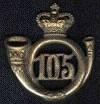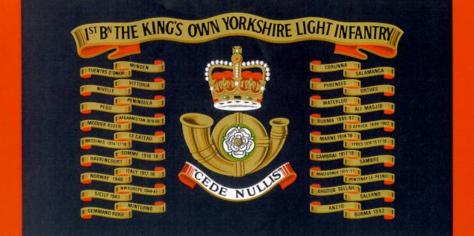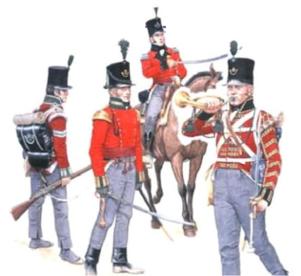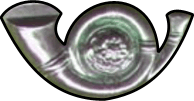(51st Foot & 105th Foot)




Origins and Development
51st of Foot raised in 1755, it became
the 2nd Yorkshire West Riding Regiment in 1782. It
was converted to a light infantry role in 1809 and
designated The King's Own Light Infantry in 1821.
The 105th was the 2nd Madras (European Light Infantry)
Regiment, raised by the East India Company in 1839
and transferred to British service in 1861. The two
were linked as The King's Own Yorkshire Light Infantry
(South Yorkshire Regiment) in 1881, becoming The King's
Own (Yorkshire Light Infantry) in 1887 and The King's
Own Yorkshire Light Infantry in 1948, at which time
the two regular battalions were amalgamated.
The founder of the Light Infantry Sir
John Moore received his first commission in the 51st
and he was killed at Corunna in 1809, this is one
of the regiments battle honours. The 51st became a
light infantry corp in the same year and was designated
The King's Own in 1821.
The KOYLI badge is described as a French
Horn with a white rose of York in the twist. Only
the Ox & Bucks as the original Light Infantry
wore a simple bugle horn, all the others had slight
differences.
In 1881 the 51st was linked to the 105
Madras Light Infantry Regiment in the East India Company
service and was obsorbed into the British Army in
1861.
The Regiment wore blue facings and marched
to "The Jockey of York". The KOYLI Museum
is in Doncaster, the Colours and Regimental Memorials
are in York Minster. In 1969 on the 165th anniversary
of Sir John Moore founding the Light Infantry the
Regiment became the 2nd Battalion The Light Infantry.
History
The 51st was one of the Minden regiments,
this being its first battle honour, earned on 1st
August 1759, Sir John Moore, the effective creator
of the British light infantry arm, was commissioned
into the 51st in 1777, later being appointed its Commanding
Officer in 1790 before receiving a brigade command.
At Badajoz on 6th April 1811 Ensign
Joseph Dyas twice led the storming party into the
breach of San Christobal Fort. Offered immediate promotion
by Wellington into another regiment, Dyas declined
to leave the 51st. At Waterloo the 51st was on the
extreme right of the British line. In the Second Burma
War 1852 it gained the battle honour of "Pegu"
and was later on the North West Frontier during the
Second Afghan War.
|
The Colours of the 51st Foot that were carried
at the Battle of Waterloo 1815.
Click Image for Larger Version
Note: Opens in New Window

The Uniforms of the 51st Foot that were
worn at the Battle of Waterloo 1815.
Click Image for Larger Version
Note: Opens in New Window
|
The 1st Battalion of the new linked
regiment saw service in Burma again in 1885 and on
the frontier in the Tirah campaign in 1897. Meanwhile
the 2nd Battalion had formed part of the Zhob Valley
Field Force in 1890 and went on to distinguish itself
in the South African War.
In WW1 the 2nd Battalion was at Le Cateau
on 26th August 1914, taking some 600 casualties. The
1st Battalion reached France from Singapore in 1915
and was later to serve in Salonkia before returning
to the Western Front in 1918.
In WW2 both the 5th & 8th Battalions
were converted to light anti-aircraft regiments and
the 7th Battalion to armour. The 2nd Battalion took
part in the longest retreat in British military history,
that from Burma to Assam on the frontier of India
in the face of the Japanese in early 1942. After the
war, the 1st Battalion served during the emergencies
in Kenya, Aden and Cyprus and in Sarawak and Brunei,
during the Malaysian/Indonesian confrontation.
Nicknames
The Koylis: from the initials of Kings
Own Yorkshire Light Infantry.
Colonel-in-Chief
Her Majesty Queen Elizabeth
The Queen Mother (Late)
Motto
"Cede Nullis" (Yield to
None)
Badge
A French Horn with the White Rose
of York
Facings Royal Blue
Regimental Marches
Jockey to the Fair
Minden March (slow)
King's Own Yorkshire Light Infantry Regiment Association
Contact: Minden House, Wakefield Road, Pontefract, West Yorks, WF8 4ES, Tel: 01977 703181


